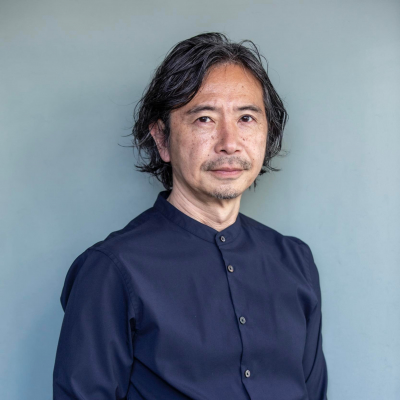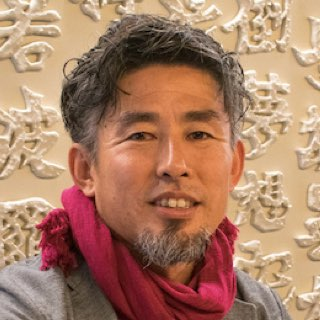
Satoru Otowa
Director, Jingushicho Manager, Public Relations Office
The Ise Jingu Shrine hosts approximately 1,500 festivals and rituals each year, but perhaps the most important one is the Kannamesai festival, which is a symbol of Japan’s rice culture. Among these annual festivals, the Shikinen Sengu ritual is said to be the shrine’s most solemn ceremony, that the shrine’s deity (the sun goddess Amaterasu) is transferred to a new shrine building every twenty years. This In the Man’yoshu book of poems and other classical texts, the Ise Jingu Shrine is so called as Kamukaze no Ise, or Ise of divine winds. “Divine winds” brings to mind a gentle climate, natural features, and sufficient amount of rain for abundant harvests. I believe it is the ideal representation of Ise. Moreover, according to the Nihon Shoki, or Chronicles of Japan, during the reign of Emperor Suinin, Amaterasu said to Yamatohime-no-mikoto, “This Ise of divine winds is a province where the waves of heaven continuously reach the shore.” Amaterasu is a symbol of the sun, and her words imply the sun, the wind and the waves nurtured the nature of Ise, and show how the sacred city exists as one with nature.
Food, clothing, and shelter are essential for humans These three elements are also an essential part of the Shikinen Sengu, which was first conducted around 1,300 years ago. Here I would like to focus on the food that have been offered forshrine deities throughout the shrine’s long history.
Today, global environmental consideration are growing and the increase in greenhouse gas emissions and the disposal of leftover food are frequently broadcasted on news. I believe that the food culture at Ise Jingu Shrine could contribute to the future of global society.
According to a record from 804 (Enryaku 23) of the ceremonies held at the Kotai Jingu Shrine, which is the inner shrine at Ise, at the Tsukinamisai festival held on June 15, local peasants from Shima province offered abalone and turban shells to the deities. Meanwhile, in chapter 4 of the Engishiki (Procedures of the Engi Era; completed 927 (Engi 5)) , which is about ceremonies at the Ise Jingu Shrine, offerings at three important shrine festivals were said to be dried foods, sea slugs, skipjack tuna, seaweed, salt, and oil. In the medieval text Jinposho—a list of districts within the Ise Jingu Shrine —we can see that, including from 14 districts in Ise province, the inner and outer shrines of the Ise Jingu Shrine received offerings from 1,350 different locations in 40 of Japan’s more than 60 provinces at the time.
Even after the relaxation of the Ritsuryo system, provinces continued to present offerings to Ise. Up until the Meiji Restoration, slices of fish, wild birds, and water birds were placed in special baskets, washed in the Isuzu River, and offered to the deities at the Ise Grand Shrine’s three important festivals. The way of these offerings were varied, and in some eras, Fruits of the sea and the land were placed on special leaves (mitsuna kashiwa) atop tables elaborately woven with wisteria vines.
Organizational changes that were part of the national shrine reforms implemented in 1871 (Meiji 4) abolished the territory system, and shrines were required to be self-sufficient and provide for their own food,in principle. Today, there are a total of 25 great food offerings (known as Yuki-Omike) presented to the Kotai Jingu Shrine and the Aramatsuri-no-miya Shrine during the Kannamesai: rice, mochi rice cakes, three types of abalone, dried sea bream, Ise shrimp, raw sliced sea bream, dried barracuda, dried sand borer, dried turban shell, dried sea slug, dried bonito, carp, dried shark, dried gnomefish, dried sweetfish, wild bird, water bird, two types of seaweed, lotus root, daikon radish, pear, and persimmon. Also offered are white sake, black sake, thick sake, refined sake, salt, and water. Yuki means “sacred offering”.
Records from the Ise Jingu Shrine show that morning and evening offerings included steamed black rice, solid salt (katashio) from Futamiura, and water from a sacred well (Ameno-Oshihoi), showing that rice, salt, and water—three key elements for life in Japan—have been offered to the deities since ancient times. Moreover, this salt from Futamiura was not only used as an offering during festivals, but also used for purification purposes. This offering of has begun during the era of Emperor Suinin when Amaterasu was enshrined at the Kotai Jingu Shrine.
When Yamatohime-no-mikoto set out across the provinces to find a location for Amaterasu, Samitsuhime-no-mikoto is said to have greeted her at Futami beach and made an offering to her of solid salt. This led Yamatohime-no-mikoto to set up Katada Shrine in that location. Katada Shrine is an auxiliary shrine of Kotai Jingu Shrine in Futamichoe, and the offering of salt from Futami began from here. Later, Owakugo-no-mikoto, who followed Yamatohime-no-mikoto, is said to have established Mishio-hama beach and Mishio-yama mountain, two essential locations for salt production.
Since long ago, woods of Mishio-yama mountain have been cut to draw water from the sea. This seawater is then taken to be boiled to produce salt before being hardened at the Mishiodono Shrine. Records show that dedicated salt-producing staff worked at both the outer and inner shrines of Ise Jingu Shrine from the early Heian period.
Up until the Kamakura period, a tax system was in place so that these salt-producing staff could supply salt. However, this system ended at the end of the Kamakura period when the salt-producing staff were replaced with new salt-producing shrine officials. Incidentally, in the second volume of Ise shinmeisho-e utaawase emaki (Illustrated Scroll of a Poetry Competition Based on New Scenic Sites of Ise) there is an excellent depiction of this salt-making process.
While there have been several problems between the early modern and modern era, the supply of solid salt from Futami continues today.
Although there have been numerous changes in the above offerings, the pure, clear, correct, and honest spirit of Shinto priests, as well as the customs and rules of religious rituals and services, remain unchanged. Today, as before, people continue to pray deeply to the deities. It is important to note that these offerings are not put to waste, but divided and given to those involved in the rituals and services.
Today, global warming and the destruction of nature are becoming international problems,that is caused by energy resources wasting and industrial wasting increase. In contrast, food culture has become much more efficient in our lives today. Delicious microwaveable frozen food products are available at our supermarkets. In today’s world, where nuclear families and dual-earner households are a matter of course, saving cooking time is a revolution in food culture for families with some children or families required to be cared..
In Japan, people traditionally express their thanks before and after a meal with the phrases itadakimasu and gochisosama. This custom can be traced back to a scholar from the Edo period called Motoori Norinaga, who wrote two poems about his appreciation for food. This Japanese custom to express thanks for the blessings of nature is at risk of being lost through today’s food culture.
Earlier in this article, I introduced the many different offerings made at Ise Jingu Shrine, and you might have noticed the abundance of dried foods. Dried fish, which are also a valuable preserved food, are said to increase in umami and nutritional value when dried under the sun. At the Ise Jingu Shrine, steamed foods such as shrimps, oysters, and squid are also offered to the shrine deities. Up until medieval Japan, simmering foods was not an established cooking method, with ingredients either being grilled or steamed. Perhaps the people of old thought that steaming foods would create a more delicious offering to present to the deities. In some of today’s rituals, old cooking methods for these offerings are still maintained.
Shinto priests at ancient shrines show their appreciation for food by first offering the fruits of the sea and the land to the deities before consuming the food themselves. Looking back on my own childhood growing up in Shiga, I have memories of my grandmother or mother offering freshly steamed rice to our household shrine and Buddhist altar every morning. Although I am unsure whether the practice is still upheld today, previously, there were many families who would make daily offerings to their ancestors without fail. My hope is that this article can act as a pointer for the future before Japan’s traditional food virtues and values are lost entirely.







